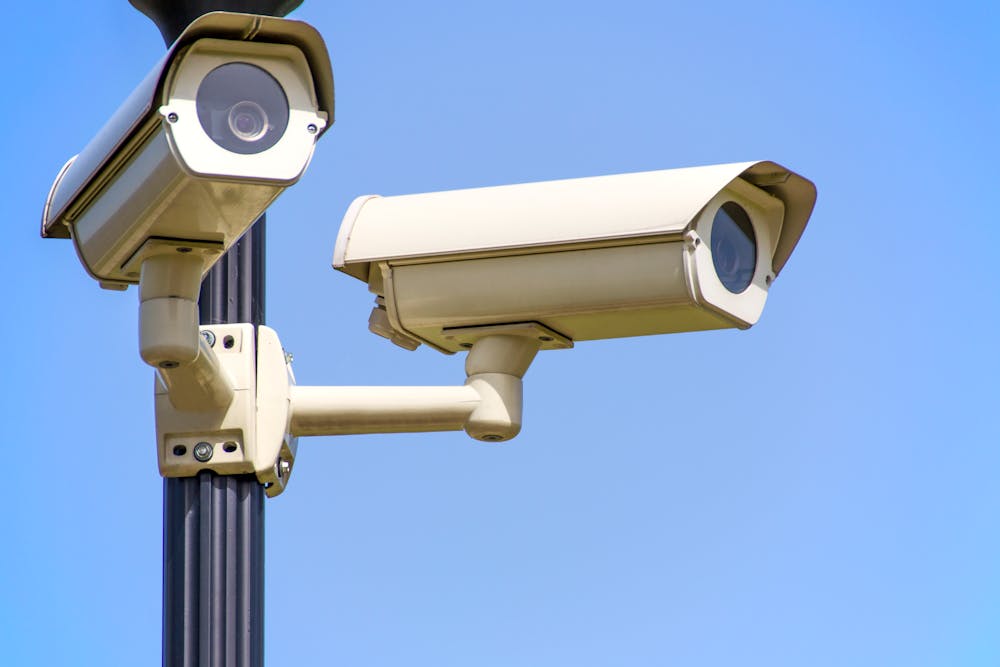Reviews
Top Video Surveillance Software in 2025 (Modern Solutions)

The video surveillance industry is evolving faster than ever before. What began as simple CCTV systems has transformed into AI-driven, cloud-connected security ecosystems that combine analytics, automation, and real-time intelligence.
According to MarketsandMarkets, the global video surveillance software market is projected to surpass $15 billion by 2030, growing at an 11% CAGR. This surge is driven by two key factors: the adoption of AI analytics for smarter incident detection, and the migration to cloud or hybrid architectures that eliminate the need for on-premise NVRs.
In 2025, the best video surveillance software does more than record footage. It interprets what it sees. These platforms can detect weapons, identify unusual behavior, and automate alerts that help security teams act faster and smarter.
This guide reviews seven leading video surveillance software solutions for 2025. We start with Coram, an AI-powered platform that brings access control, analytics, and video management into one intelligent system.
Coram
Coram represents the next generation of video surveillance software. It combines AI analytics, real-time monitoring, and integrated access control to deliver total visibility and automated response from a single platform.
The system is hardware-agnostic, meaning it works with existing IP cameras and supports ONVIF standards for interoperability. Coram’s AI engine detects events such as motion anomalies, slip-and-fall incidents, smoke, and even firearms directly from camera feeds. When threats are detected, the system can automatically trigger alerts, lockdowns, or notifications to 911 via its Emergency Management System (EMS) integration.
Key Features
- AI-Powered Analytics: Detects weapons, smoke, and suspicious behavior in real time.
- Cloud + Edge Architecture: Processes video locally for low latency while syncing securely to the cloud.
- Unified Platform: Integrates access control, EMS, and video into one interface.
- Compliance Ready: Meets NDAA and SOC 2 standards with detailed audit trails.
- Smart Search: Allows instant object or event-based video retrieval using natural language queries.
Why It Stands Out
Unlike traditional VMS tools, Coram goes beyond recording. It interprets and reacts, giving organizations both situational awareness and automated decision-making capabilities. Schools, hospitals, and enterprise facilities use Coram to reduce investigation time, improve safety, and eliminate blind spots.
Genetec Security Center Omnicast
Genetec remains a dominant name in enterprise-grade video management. Its Omnicast module offers scalable video management that integrates with access control, license plate recognition, and analytics.
Key Features
- Federated architecture for large multi-site management.
- Built-in analytics for motion and object detection.
- Cybersecurity features such as encryption and digital signatures.
- Compatibility with thousands of IP camera models.
Genetec excels in complex deployments such as airports, municipalities, and data centers where uptime and integration flexibility are critical.
3. Milestone XProtect
Milestone’s XProtect is one of the most established open VMS platforms in the market. It supports hundreds of camera manufacturers, making it ideal for organizations with mixed hardware environments.
Key Features
- Scalable from small business to enterprise.
- Open SDK and API for third-party integrations.
- Edge storage support for bandwidth optimization.
- Centralized monitoring and health dashboards.
Milestone’s focus on openness and interoperability ensures long-term flexibility and investment protection.
4. Verkada Command
Verkada offers a fully cloud-managed video platform designed for simplicity and ease of use. Cameras connect directly to the cloud, eliminating NVRs, while the Command dashboard provides real-time visibility and AI search capabilities.
Key Features
- 100% cloud-managed with automatic firmware updates.
- Motion and people analytics powered by edge AI.
- Instant video retrieval and sharing via browser.
- Secure user management with SSO and role-based access.
Verkada is ideal for organizations that value ease of deployment and a modern, app-based experience over deep customization.
5. Avigilon Unity Cloud
Avigilon, part of Motorola Solutions, combines high-quality cameras with analytics and cloud management. The Unity Cloud platform enables organizations to access live and recorded video anywhere while benefiting from advanced object and facial recognition.
Key Features
- AI analytics for people, vehicles, and license plates.
- Hybrid storage (cloud and on-premise).
- End-to-end encryption and multi-site management.
- Automated alerts based on event classification.
Avigilon’s strength lies in its combination of AI precision and Motorola’s hardware ecosystem, making it a reliable choice for large institutions.
6. Eagle Eye Networks
Eagle Eye Networks specializes in cloud video surveillance with a strong emphasis on flexibility and cybersecurity. Its platform supports both analog and IP cameras through its bridge device, making it suitable for hybrid migrations.
Key Features
- True cloud architecture with remote management.
- AI analytics and object recognition.
- Open API for integration with POS and IoT systems.
- Bandwidth optimization and data encryption.
Eagle Eye’s open ecosystem and strong cloud capabilities make it one of the most popular VMS choices for franchises, retail, and logistics networks.
7. Rhombus Systems
Best for: Mid-sized enterprises wanting AI without complexity.
Rhombus Systems delivers smart cloud video security with strong analytics and mobile-friendly control. The platform emphasizes simplicity while still offering enterprise-grade intelligence.
Key Features
- Cloud dashboard with live and historical video playback.
- AI analytics for motion, faces, and objects.
- Real-time alerts with Slack and Teams integration.
- Mobile app with instant video access and sharing.
Rhombus is ideal for organizations that want the benefits of AI and cloud without the maintenance burden of traditional VMS infrastructure.
The Evolution of Video Surveillance Software
Modern video surveillance has evolved beyond passive monitoring. The biggest advancements shaping 2025 include:
1. Cloud-first architecture
Traditional NVR systems are giving way to cloud-managed or hybrid setups. This eliminates manual backups, improves uptime, and enables access from anywhere.
2. Artificial intelligence and analytics
AI models can identify people, vehicles, and suspicious movements, allowing security teams to prioritize real threats instead of reviewing hours of footage.
3. Unified systems
The convergence of video, access control, and alarm management means fewer platforms to manage and faster response times.
4. Edge computing
Processing video data at the edge (camera or controller level) reduces bandwidth use and latency, ensuring faster alerts.
5. Cybersecurity
As cameras become connected endpoints, software vendors are investing heavily in encryption, authentication, and firmware validation to prevent breaches.
What to Look for in Modern Video Surveillance Software
When evaluating systems in 2025, focus on these key considerations:
- AI Analytics: Choose software with real-time object, motion, and threat detection.
- Cloud Management: Look for remote access, updates, and centralized control.
- Integration Capabilities: Ensure compatibility with access control, alarms, and third-party tools.
- Scalability: The platform should grow with your organization without major reconfiguration.
- Data Security: Verify end-to-end encryption, audit logs, and compliance with regulations like GDPR and SOC 2.
- Ease of Use: An intuitive interface saves training time and improves incident response.
FAQs
What is the difference between a VMS and NVR?
An NVR (Network Video Recorder) is hardware that stores camera feeds locally. A Video Management System (VMS) is software that manages, views, and analyzes those feeds — either on-premise or in the cloud.
Are AI surveillance systems accurate?
Modern AI models achieve over 90% accuracy for object detection, depending on conditions. Continuous training and updates improve accuracy over time.
Can I use my existing cameras with new software?
Yes. Most modern systems, including Coram, Milestone, and Eagle Eye, support ONVIF-compliant cameras for easy integration.
Is cloud surveillance secure?
Cloud platforms use encrypted communication, secure authentication, and compliance standards such as SOC 2 Type II to protect data from unauthorized access.
How does AI video help with investigations?
AI allows users to search footage by object type, color, or event. This reduces investigation time from hours to seconds, making it one of the biggest advantages of modern VMS software.
Final Takeaway
Video surveillance in 2025 is no longer just about watching — it is about understanding. The industry’s move toward AI, cloud management, and open integration has redefined how organizations protect people and property.
Coram leads this new generation with a unified platform that merges video, access control, and emergency management, offering instant visibility and automated response. Other leaders like Genetec, Milestone, Verkada, and Avigilon continue to push innovation with scalable and intelligent solutions.
The best surveillance software for your organization depends on your scale, infrastructure, and need for AI-driven insights. But one truth is universal: in 2025, video security is as much about data intelligence as it is about defense.

-

 World3 days ago
World3 days agoEthiopian volcano erupts for first time in thousands of years
-

 Legal1 week ago
Legal1 week agoMichigan man JD Vance sentenced to 2 years for threatening Trump and JD Vance
-

 Legal1 week ago
Legal1 week agoWoman in critical condition after being set on fire on Chicago train
-

 World1 week ago
World1 week agoHurricane Melissa registered 252 mph wind gust, breaking global record
-

 Legal6 days ago
Legal6 days agoSuspect in San Diego stabbing shot by authorities after fleeing into Mexico
-

 Legal1 week ago
Legal1 week ago1 dead, 2 injured in shooting at Dallas Walmart parking lot
-

 Health6 days ago
Health6 days agoMarburg virus outbreak in Ethiopia grows to 6 confirmed cases
-

 World6 days ago
World6 days agoU.S. sanctions companies and vessels accused of aiding Iranian military oil sales




